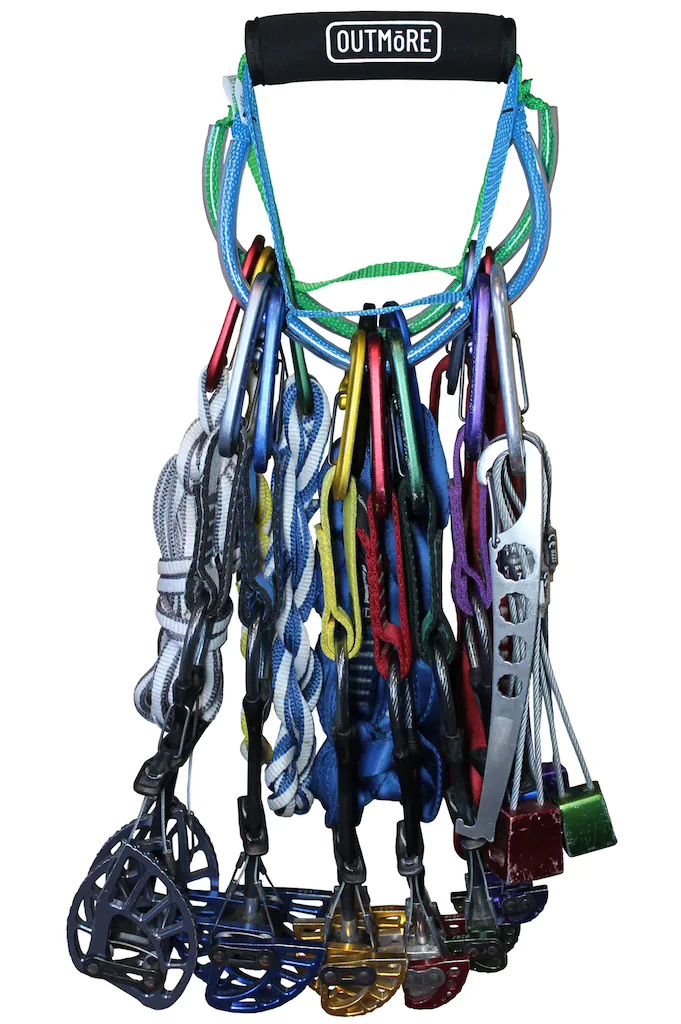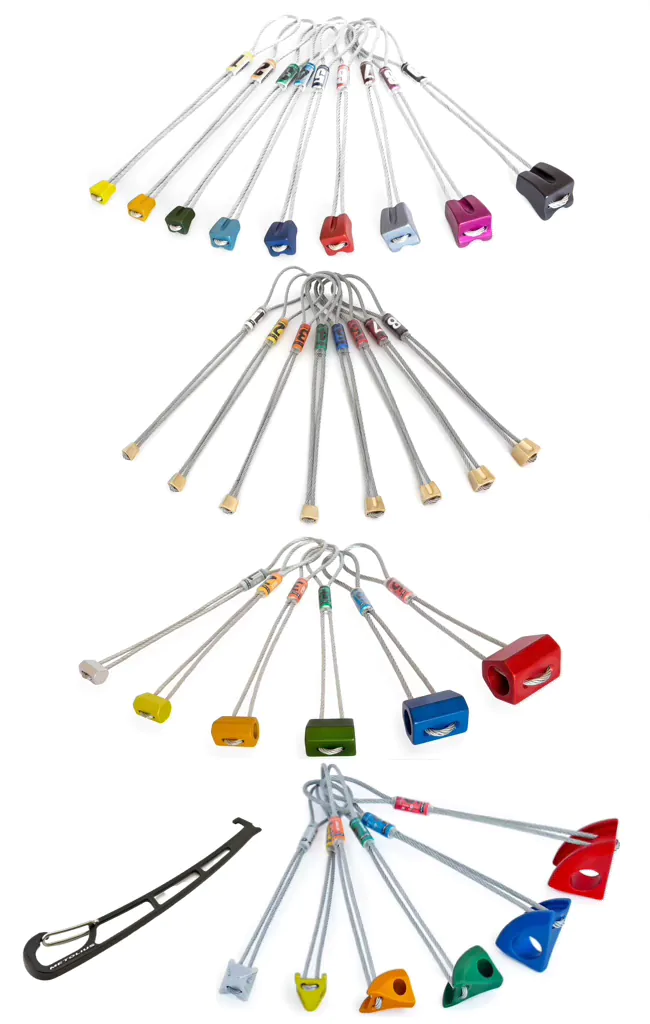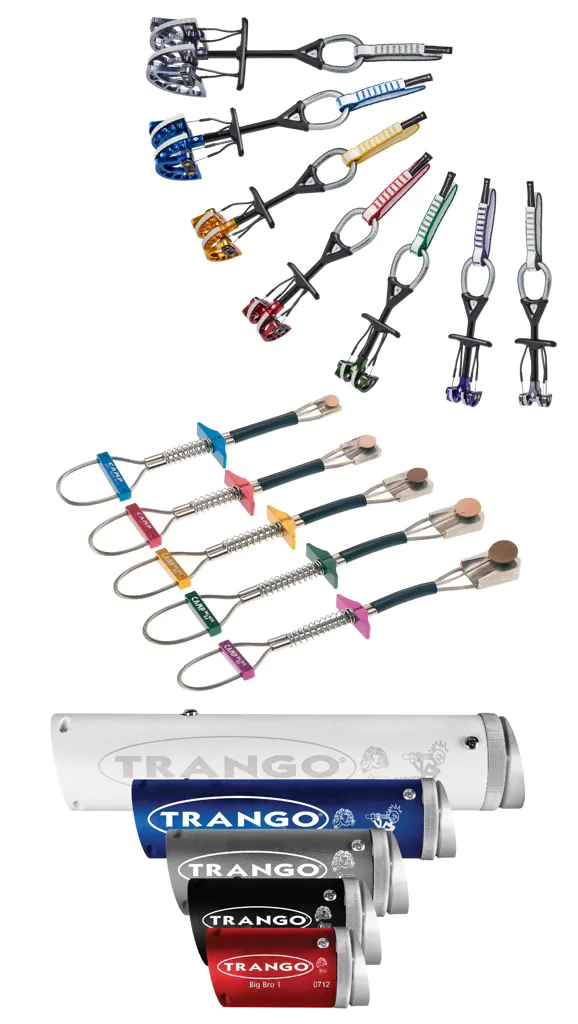Trad Climbing Gear
Trad climbing requires an extensive and complex set of gear which is used for protection instead of bolts. This protection, a.k.a. pro, is placed in cracks and fissures as you climb up, and then removed (or 'cleaned') after finishing the route.
There are 2 types of pro: passive and active. Active pro has moving parts that expand and contract to fit where needed. Passive pro has no moving parts and depends on the shape of the pro to fit the placement. Climbing guidebooks often tell what kind of gear is required for a specific climb - this is called the rack. Basic rack can be used on most climbs, yet some routes require very specific gear. Common guidebook terminology:
Gear to 3 inches. You need pro that can fit in cracks and slots that are 3" and narrower.
Standard rack. This varies by area, but usually it's a full set of nuts (7 to 13 pieces, fitting cracks up to 1.5”), and 6 or more cams, from 3” down to 0.5” and smaller.
Doubles (or double rack). This means you should bring two sets of cams in a specific size (e.g. doubles in 1”), or two sets of the standard rack of cams. Triples means three sets and so on.

Passive pro
Nuts are wedges made from aluminium, designed for tapering narrow-to-medium width cracks and to wedge into the narrowest part of that crack. Can be placed in a few ways (broad side out, sideways), but they only protect a downward pull.
Micro Nuts are used where no other protection will fit - e.g. in thin cracks, or old piton scars. Most micro nuts can only hold body weight, not a dynamic fall. They are made from brass and copper that can mold to the shape of the rock, which increases contact area and creates a more secure placement.
Hexes are made of hollow blocks of aluminium and can be used in tapering and parallel-sided cracks, and in widening cracks. Nowadays cams are more popular, but hexes are lighter, cheaper, and more secure in wet or icy cracks.
Tricams are very versatile pro, which gets stronger with more downward force. they can be placed in many positions, great for building anchors, ideal in horizontal and parallel-sided cracks, pockets, and shallow vertical cracks.
Nut tool is essential for retrieving most passive pro items!

Active pro
Cams have three or four lobes that contract when the trigger is pulled, and then expand to fill the crack when the trigger is released. These lobes are spring-loaded to hold the cam in place when it’s unweighted. During a fall the overall shape of the cam head transmits the downward force along the stem to outward force against the crack walls. These are ideal for parallel-sided cracks, and since the contraction amount varies, each cam fits several different crack widths. Cams are the most popular piece of pro, and, sadly, require a substantial budget to fill a rack.
Spring-Loaded Wedges have a small sliding piece that expands the size of the wedge once it is placed in a crack. Similar to a cam, you pull the spring-loaded trigger to retract the sliding piece, place the wedge into a narrow crack, then release the trigger to allow the sliding piece to return to its original position. The sliding piece presses against the rock and the larger piece of the wedge to hold it in position. They can fit in smaller, parallel-sided cracks, are lighter, and stronger than comparably sized cams.
Tube Chocks (a.k.a. Big Bros) are suited for extra-wide placements in parallel-sided cracks or pockets. They expand using a powerful spring-loaded mechanism, and have a collar to lock at the needed width. Tube chocks resist pull in any direction, so they can be used in vertical, horizontal and angled cracks.
